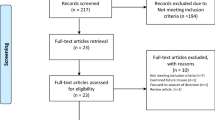Abstract
Background
Non-medical prescription-opioid (NMPO) use has been declared a national epidemic in the US. Opioid misuse is associated with substantial physiological, psychological, and concomitant economic implications. NMPO use among adolescents warrants special attention given its prevalence and the high risk of addiction.
Objectives
Our objectives were to: (a) identify factors associated with adolescent NMPO use after controlling for misclassification, while simultaneously identifying characteristics that affected the likelihood of misreporting use; and (b) identify factors associated with an individual misusing their own versus a diverted prescription, and the likelihood that the prescription source was misreported.
Methods
Data come from the Washington State Healthy Youth Survey. A maximum likelihood estimation technique for systematically misclassified binary-dependent variables was utilized. Covariates were chosen to represent influential factors identified in the theoretical adolescent development literature.
Results
An estimated 35 % of respondents who stated that they had never misused prescription opioids most likely had. An estimated 17 % of those who admitted to NMPO use claimed to have misused a diverted prescription, but most likely misused their own. Various demographic, school, neighborhood, family, substance-use, personality/attitude, and social factors were identified as potential predictors of adolescent NMPO use, opioid-prescription source, and misclassification of responses to each outcome.
Conclusions
The finding that a self-reported survey failed to identify over one-third of individuals at risk for NMPO use is concerning, as is the finding that approximately 17 % of those who admitted to NMPO use may have misstated their prescription-opioid source. The findings presented here are critical to focus prevention efforts, especially for identifying at-risk youths who may misrepresent their use.
Similar content being viewed by others
References
White House Office of National Drug Control Policy. Epidemic: responding to America’s prescription drug abuse crisis. Washington, DC, 2011. http://www.whitehousedrugpolicy.gov/publications/pdf/rx_abuse_plan.pdf. Accessed 19 Feb 2014.
United Nations Office on Drugs and Crime. The non-medical use of prescription drugs, policy direction issues, n.d. http://www.unodc.org/unodc/en/drug-prevention-and-treatment/non-medical-use-prescription-drugs.html. Accessed 12 May 2014.
Substance Abuse and Mental Health Services Administration. Results from the 2011 National Survey on Drug Use and Health: Summary of National Findings. NSDUH Series H-44. Rockville, MD: Substance Abuse and Mental Health Services Administration, 2012. http://www.samhsa.gov/data/nsduh/2k11results/nsduhresults2011.htm. Accessed 03 April 2014.
Birnbaum HG, White AG, Schiller M, et al. Societal costs of prescription opioid abuse, dependence, and misuse in the United States. Pain Med. 2011;12:657–67.
Mark TL, Woody GE, Juday T, et al. The economic costs of heroin addiction in the United States. Drug Alcohol Depend. 2001;61:195–206.
Gruber SA, Silveri MM, Yurgelun-Todd DA. Neuropsychological consequences of opiate use. Neuropsychol Rev. 2007;17:299–315.
Haydon E, Rehm J, Fischer B, et al. Prescription drug abuse in Canada and the diversion of prescription drugs into the illicit drug market. Can J Public Health. 2005;96:459–61.
Manchikanti L, Singh A. Therapeutic opioids: a ten-year perspective on the complexities and complications of the escalating use, abuse, and nonmedical use of opioids. Pain Physician. 2008;11:S63–88.
Catalano RF, White HR, Fleming CB, et al. Is nonmedical prescription opiate use a unique form of illicit drug use? Addict Behav. 2011;36:79–86.
Murphy SM, McPherson S, Robinson K. Nonmedical prescription opioid use and violent behavior among adolescents. J Child Adolescent Mental Health (in press).
Zacny J, Bigelow G, Compton P, et al. College on problems of drug dependence taskforce on prescription opioid non-medical use and abuse: position statement. Drug Alcohol Depen. 2003;69:215–32.
Johnston LD, O’Malley PM, Bachman JG, et al. Monitoring the future national results on drug use: 2012 overview, key findings on adolescent drug use. Ann Arbor: Institute for Social Research, The University of Michigan; 2013.
Compton WM, Volkow ND. Abuse of prescription drugs and the risk of addiction. Drug Alcohol Depen. 2006;83(Suppl 1):S4–7.
McCabe SE, Teter CJ, Boyd CJ. Illicit use of prescription pain medication among college students. Drug Alcohol Depen. 2005;77:37–47.
Young AM, Glover N, Havens JR. Nonmedical use of prescription medications among adolescents in the United States: a systematic review. J Adolesc Health. 2012;51:6–17.
Nielsen MW, Sondergaard B, Kjoller M, et al. Agreement between self-reported data on medicine use and prescription records vary according to method of analysis and therapeutic group. J Clin Epidemiol. 2008;61:919–24.
Sarangarm P, Young B, Rayburn W, et al. Agreement between self-report and prescription data in medical records for pregnant women. Birth Defects Res A Clin Mol Teratol. 2012;94:153–61.
Tennekoon V, Rosenman R. Systematically misclassified binary dependent variables. Comm Stat Theory Methods (in press). doi:10.1080/03610926.2014.887105.
Washington State Department of Health. Healthy Youth Survey. Olympia.
Ellickson PL, McGuigan KA. Early predictors of adolescent violence. Am J Public Health. 2000;90:566–72.
Washington State Department of Health. Healthy Youth Survey 2008 Analytic Report. Olympia, WA, 2010. http://www.askhys.net/library/Old/08analyticreprt.pdf. Accessed 05 May 2014.
Little RJ. A test of missing completely at random for multivariate data with missing values. J Am Stat Assoc. 1988;83:1198–202.
Little RJ, Rubin DB. Statistical analysis with missing data. 2nd ed. Hoboken: Wiley-Interscience; 2002.
Tennekoon V, Rosenman R. Bias in measuring smoking behavior. School of Economic Sciences Working Paper 2013-10. 2013. http://faculty.ses.wsu.edu/WorkingPapers/rosenman/WP2013-10.pdf. Accessed 22 Sept 2014.
Hausman JA, Abrevaya J, Scott-Morton FM. Misclassification of the dependent variable in a discrete-response setting. J Econometrics. 1998;87:239–69.
Acknowledgments
Dr. Murphy was supported by a seed grant from the Governor’s Washington State Life Science Discovery Fund (Roll, PI) to the Program of Excellence in Rural Mental Health and Substance Abuse Treatment.
Author Contributions
Dr. Murphy is the primary researcher. Drs. Murphy, Rosenman and Friesner all contributed to the conception and design of the study. Dr. Murphy acquired the data, performed the statistical analyses and wrote the initial draft. Drs. Rosenman and Friesner provided input on the statistical approach, performed critical reviews and collaborated with Dr. Murphy on manuscript revisions. All authors approved the final manuscript and are responsible for the final content.
Author information
Authors and Affiliations
Corresponding author
Electronic supplementary material
Below is the link to the electronic supplementary material.
Rights and permissions
About this article
Cite this article
Murphy, S.M., Friesner, D.L. & Rosenman, R. Opioid Misuse Among Adolescents: New Evidence from a Misclassification Analysis. Appl Health Econ Health Policy 13, 181–192 (2015). https://doi.org/10.1007/s40258-015-0151-z
Published:
Issue Date:
DOI: https://doi.org/10.1007/s40258-015-0151-z




